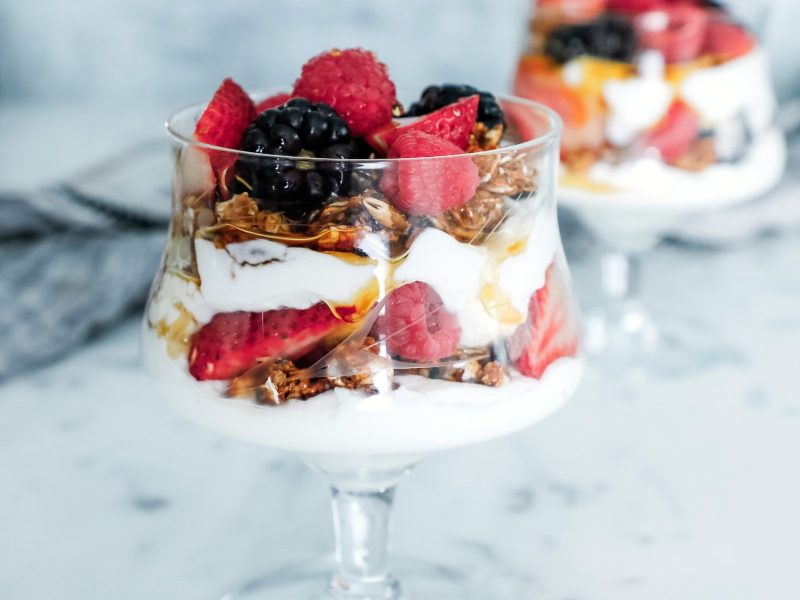You’ve likely heard the term “essential nutrients,” but what is it that makes a nutrient essential?
The word “nutrients” is a broad term that applies to the vitamins, minerals, phytochemicals, and other compounds that we need for growth, health, and survival. Some nutrients are called “essential” because our bodies can’t produce them—or at least are unable to do so in sufficient quantities—so we must get them through our food. A few examples of essential nutrients are vitamins A, C, D, E, and K; and macronutrients: protein, fat, and carbs.
One of the biggest criticisms leveled against The Paleo Diet® is that by eliminating two food groups—dairy and grains—it’s not possible to get the essential nutrients we need to thrive.
The problem with that argument is that it doesn’t factor in the nutrient density of the various food groups. When all the groups are ranked in order of their density of essential nutrients, the groups eliminated by the Paleo Diet are at the bottom of the list.
Grains and dairy, while often high in calories, actually have very little in the way of essential nutrients. In fact, two nutrients that are often wrongly cited as a reason to consume dairy and grains—folic acid and vitamin D—don’t exist naturally in those food groups. They are fortified. In other words, you’re essentially taking a supplement with your grains and dairy because they can’t meet your nutritional needs naturally.
The Paleo Diet Is Higher in Nutrients and Lower in Calories
The argument that we could become deficient if we eliminated grains and dairy is only true if we didn’t replace those calories. But on The Paleo Diet, you would replace those nutrient-poor foods with much more nutrient-rich fruits, vegetables, and natural meats. As a result, The Paleo Diet is actually more, not less, nutrient dense.
To prove this, we took a Mediterranean meal plan—considered nutrient dense by the nutrition community—and replaced the non-Paleo foods with Paleo foods. The result was a more nutrient-dense diet.
To take it a step further, a diet based on nutrient-poor, but calorically dense grains and dairy leads to over-consumption. There is an increasingly large body of research showing that hunger signals are not an on-off switch. We are usually hungry for key nutrients and if we don’t get them, the hunger signals don’t turn off. This is why someone can eat a fast-food meal with over a thousand calories and still feel hungry. They got a lot of calories, but not the nutrients their bodies needed.
However, if you eat a 400-calorie salad packed with nutrient-dense vegetables and salmon, you’ll feel satiated. This is why it’s possible to eat The Paleo Diet without counting calories and still maintain a healthy weight.
Why Supplements and Substituting Don’t Compensate for Nutrient Density
The importance of this nutrient density is also one of the primary reasons The Paleo Diet does not promote regularly substituting ingredients to recreate non-Paleo foods, like replacing wheat flour with almond flour. Flour, even if it is a nut flour, or sweeteners, even from natural honey, have little to no nutrient density. You’ll have the same problem of getting a lot of calories, but not the nutrients you need. That’s why many dessert recipes on our site can only qualify for PaleoFLEX™, never TRUEPALEO™!
Likewise, we don’t promote most supplements because they tend to contain less bio-available forms of key nutrients. They often don’t have natural ratios of vitamins and minerals, so when you take a multivitamin, your body suffers from competitive absorption: You’ll get too much of some nutrients and little to none of others.
Finally, supplements rarely contain everything we need. There are many important nutrients, such as some phytochemicals, that are essential to optimal health that we still don’t fully understand. Manufacturers don’t put them in multivitamins, so you miss out on important benefits you’d get from eating whole foods.
The Flip Side of Nutrient Density: Anti-Nutrients
What’s not shown on nutrition facts is the anti-nutrient density of the various food groups.
Anti-nutrients are chemicals in foods that are designed to cause problems in our bodies, such as inflammation or the breakdown of the gut barrier. It turns out that the foods which are low in nutrient density, such as grains and legumes, are also highest in anti-nutrients such as lectins, saponins, and phytate. This is another good reason that a healthy diet excludes these food groups.
The Paleo Diet focuses on food groups that have a high nutrient density, while avoiding food groups that have both a low density and are high in anti-nutrients. The result is a nutrient-rich diet that is going to keep you full and feeling vibrant, avoiding the consequences of anti-nutrients such as chronic inflammation.


